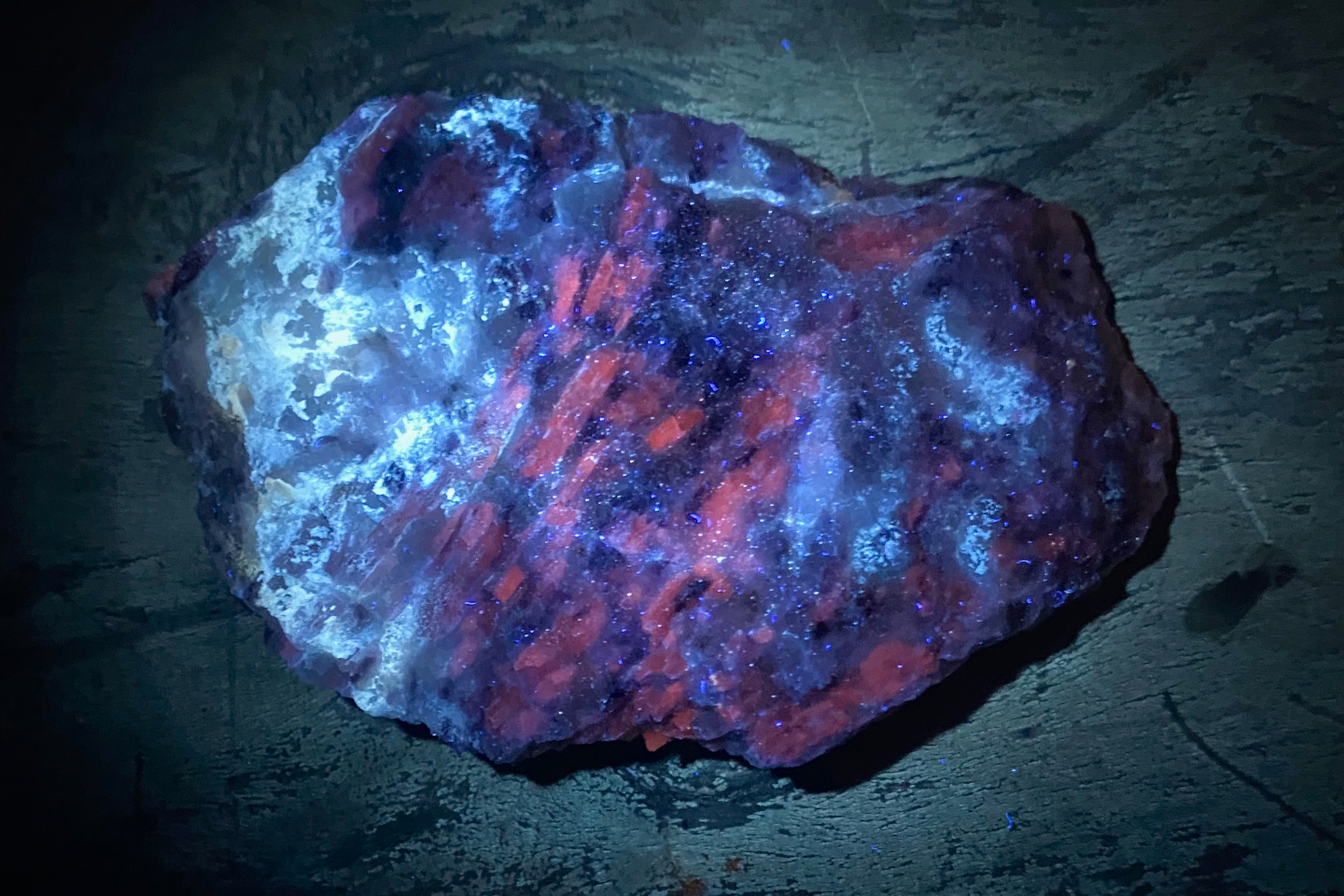Infinity Mining’s recent drilling in a big swarm of stacked Pilbara pegmatites has yielded assays of up to 2.1 per cent lithium oxide and supportive rubidium, caesium and tantalum values, with more work to come. The company says its campaign of eight reverse-circulation drillholes for 834m at its Tambourah South project in Western Australia produced several outstanding shallow lithium-caesium-tantalum intercepts.

Infinity Mining’s recent drilling in a big swarm of stacked Pilbara pegmatites has yielded assays of up to 2.1 per cent lithium oxide and supportive rubidium, caesium and tantalum values, with more work to come.
The company says its campaign of eight reverse-circulation (RC) reconnaissance drillholes for 834m at its Tambourah South project in Western Australia produced several outstanding shallow lithium-caesium-tantalum (LCT) intercepts.
The top lithium grades in analytical results from RC drill chips in 1m intercepts were 0.99, 1.41, 1.45 and 2.1 per cent lithium oxide, in addition to a 2m intercept at 1.38 per cent lithium oxide. Elemental lithium is generally shown to be running at more than 1200 parts per million to a maximum of 9770ppm lithium and most of the analyses feature elevated rubidium, caesium and tantalum values.
Infinity says that while lithium results from the program vary considerably, the fertility of the overall system is reflected not just by several solid LCT intercepts. It also confirmed spodumene as the dominant lithium-bearing mineral by applying a portable spectrometer to various pegmatite drill chips.
The company’s Tambourah South project sits some 70km south-east of Pilbara Minerals’ massive Pilgangoora lithium venture and 95km south-west of Global Lithium Resources' Marble Bar lithium project.
Infinity Mining chief executive officer Joe Groot said: “The Tambourah Project continues to deliver exceptional high-grade lithium results with every exploration phase as we advance all three lithium prospects at Tambourah, showing it to be a fertile lithium system that is highly under-explored.”
Groot also said that based on the most recent rock-chip results in the north-western zone of the tenement, the company had drilled the central-eastern pegmatites at its McNeill prospect and delineated shallow lithium-tantalum mineralisation hosted in LCT pegmatites. It is now aiming to identify other concealed pegmatite targets for follow-up exploration.
One drillhole was put into the southern part of McNeill to test the depth continuity of the longest surface outcropping pegmatite. It was terminated at 38m while still in pegmatite and intercepted 11m at 0.42 per cent lithium oxide and 92ppm tantalum from 17m, including 3m at 0.99 per cent lithium oxide and 110ppm tantalum from 19m. It also included 1m at 1.41 per cent lithium oxide from 20m, 2m at 1.38 per cent lithium oxide and 105ppm tantalum from 30m and 1m at 2.1 per cent lithium oxide from 31m and is interpreted to have an easterly down-plunge to the mineralisation.
Another hole was put into the southern part of McNeill and intercepted 1m at 0.88 per cent lithium oxide, supported by 4080ppm lithium from 15m depth. A separate 1m intercept ran 0.91 per cent lithium oxide and 4220ppm lithium from 22m.
At the company’s Grumpy prospect, a pair of adjacent holes were put in to test the extensive inclined, sheeted and parallel stacked pegmatites evident at surface, with holes oriented nearly perpendicular to the inferred plane of the pegmatites. Intercepts from the first hole, which was terminated at 106m, include 7m of lithium-tantalum mineralisation from 61m to 68m at an average grade of 0.28 per cent lithium oxide, 1310ppm lithium and 79ppm tantalum.
But more significantly, it includes 1m at 1.45 per cent lithium oxide, 6740 ppm lithium and 65ppm tantalum from 66m.
The second hole was terminated at 200m and intercepted two additional pegmatites below the previous hole. Management interpreted it to confirm a stacked configuration and as being a down-dip extension of mapped surface outcrops.
Only the uppermost of the three pegmatites was sampled by the second hole, yielding 8m at 1116ppm lithium and 118ppm tantalum from 70m, including 1m at 0.51 per cent lithium oxide, 2390ppm lithium, and 135ppm tantalum from 74m and a further 1m at 0.48 per cent lithium oxide, 2210ppm lithium and 122ppm tantalum from 76m. It is interpreted to have a similar easterly down-plunge to mineralisation.
Throughout almost all of the drilling, rubidium and caesium analyses were commonly elevated. Rubidium is reported to a maximum of 1m at 2040ppm and caesium attained a peak grade of 1m at 136ppm.
Infinity’s exploration licence features a vast swarm of pegmatites evident at surface, mostly with a dominant north/north-easterly strike and it seems unlikely that many have been tested in the current lithium context – if ever. And it seems certain more lie at depth.
The latest drill results provide the encouragement needed for Infinity to forge ahead with more comprehensive exploration that will likely include adding some new technologies such as passive seismic and perhaps other geophysics to the toolbox. It may also comprise some good, traditional structural and geological mapping and a few good looks at some known mineralised zones with a diamond rig – for which the company has already secured co-funding support through the WA Government’s Exploration Incentive Scheme.
Is your ASX-listed company doing something interesting? Contact: matt.birney@businessnews.com.au














